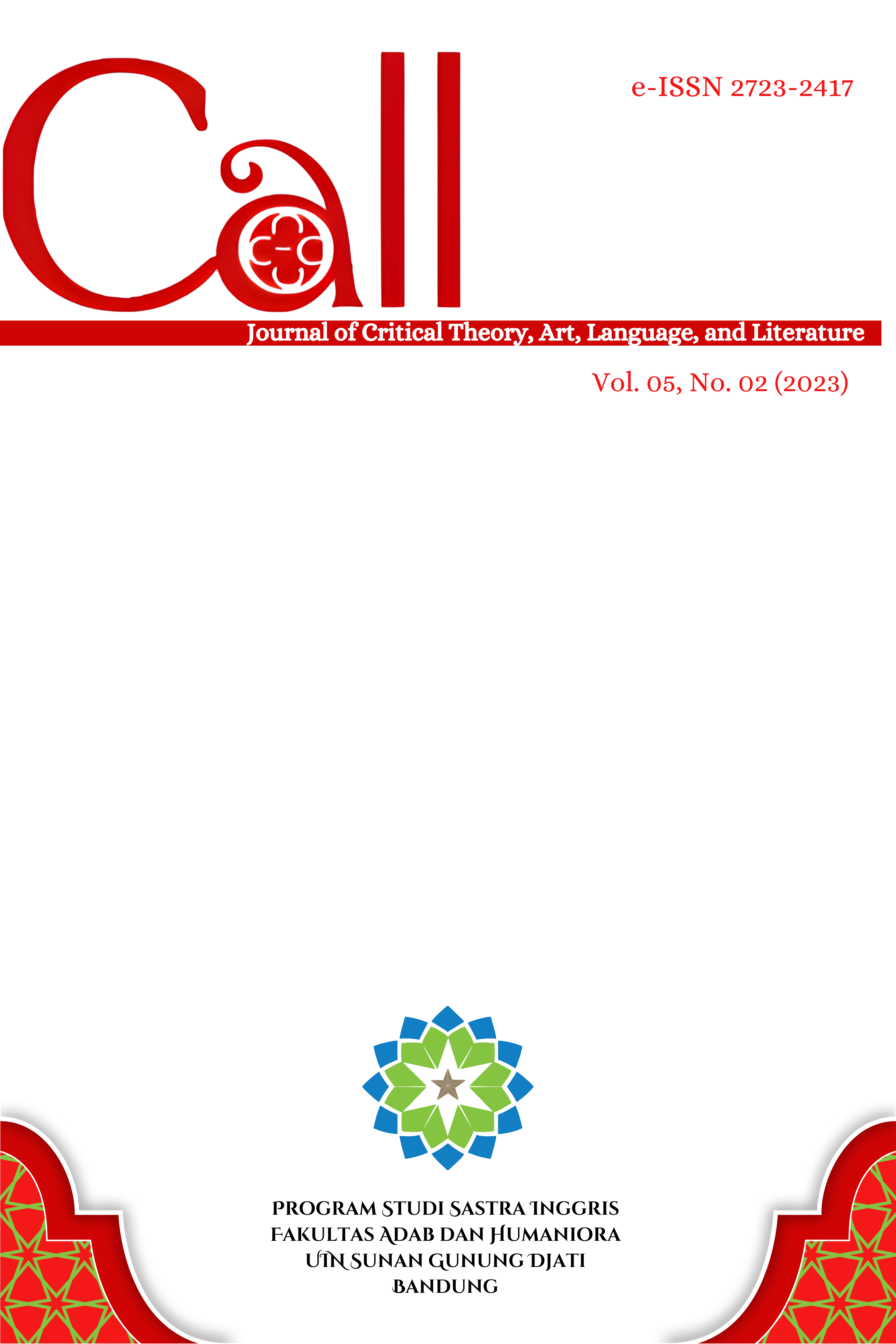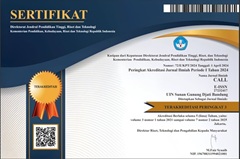REPRESENTATION OF THE MESSAGE OF PEACE IN THE FILM KINGDOM OF HEAVEN (2005)
DOI:
https://doi.org/10.15575/call.v5i2.15483Abstract
There were efforts to send a message of peace seem necessary to eliminate all kinds of terrorist stereotypes against Muslims. Many western films were produced to convey the message of peace were made with many attempts. One of these is Ridley Scott's Kingdom of Heaven (2005), set during the Crusades in the late 12th century as a historical piece from the Battle of Jerusalem. This study focused on the character structure of the film Kingdom of Heaven in such a way that the message of peace is conveyed in the film. The study used a qualitative approach combined with the descriptive analysis approach of Charles Sanders Peirce's semiotic theory, called the trichotomy of sign meaning. Data collection techniques using observation, identification and documentation for the film Kingdom of Heaven. The results showed that the image of the message of peace expressed in the film was a war in the name of religion and does not seem to defend a particular religion, but is shaped by different interests. In conclusion, the film determined that not all westerners are good and not all Muslims are bad.
Â
Keywords: kingdom of heaven, signs messages of peace, Charles Sanders Peirce's semiotic theoryReferences
Antony, S., & Tramboo, A. I. (2021). An overview of Jean Baudrillard's simulacra and simulation. European Journal of Molecular & Clinical Medicine Hyperreality in Media and Literature, 7(10):3314-3318.
Cobley, P., & Jansz, L. (1999). Introducing semiotics. Cambridge, UK: ICON BOOKS UK.
Fiske, J. (2007). Culture and comunication studie: sebuah pengantar paling komprehensif. Yogyakarta: Jalasutra.
Ghumman, S., & Ryan, A. M. (2013). Not welcome here: discrimination towards women who wear the Muslim headscarf. Human Relations, 66(5), 671-698.
Hartley, J. (2009). Communication, Cultural, and Media Studies: Konsep Kunci. Yogyakarta: Jalasutra.
Kurniaji, S. A, & Clareta, D. (2022). Representation of the conflict of the working class and the slaughter class: Roland Barthes' semiotics analysis in movie "Turah". JOSAR: Journal of Students Academic Research, 7(2): 408-420.
Lindebaum D. (2014). Ideology in organizational cognitive neuroscience studies and other misleading claims. Frontiers in human neuroscience, 7, 834.
Najmuddin, M., & Tajibu, K. (2023). Avoiding fitnah: a review of Islamic communication ethics. Palakka: Media and Islamic Communication, 4(1), 15-24.
Radvánszky, A. (2010). The semiotic perspectives of the symbol. Trans, 10(1):1-13.
Sobur, A. (2004). Semiotika komunikasi . Bandung: Remaja Rosdakarya.
Sumadinata, R. W. S., Sulaeman, O., & Yulianti, D. (2020). Islamic peace education: internalization of God’s feminine names to santri in the syukrillah Islamic boarding school. INFERENSI, Jurnal Penelitian Sosial Keagamaan, 14(1), 49-70.
Syam, F., Mangunjaya F. M., Rahmanillah A. R., & Nurhadi R. (2020). Narrative and the politics of identity: patterns of the spread and acceptance of radicalism and terrorism in Indonesia. Religions, 11(6):290.
Downloads
Published
Issue
Section
Citation Check
License
Authors who publish in CALL agree to the following terms:
- Authors retain copyright and grant the journal right of first publication with the work simultaneously licensed under Attribution-ShareAlike 4.0 International (CC BY-SA 4.0) License that allows others to share the work with an acknowledgment of the work's authorship and initial publication in this journal.
- Authors are able to enter into separate, additional contractual arrangements for the non-exclusive distribution of the journal's published version of the work (e.g., post it to an institutional repository or publish it in a book), with an acknowledgment of its initial publication in this journal.
- Authors are permitted and encouraged to post their work online (e.g., in institutional repositories or on their website) prior to and during the submission process, as it can lead to productive exchanges, as well as earlier and greater citation of published work (See The Effect of Open Access).




